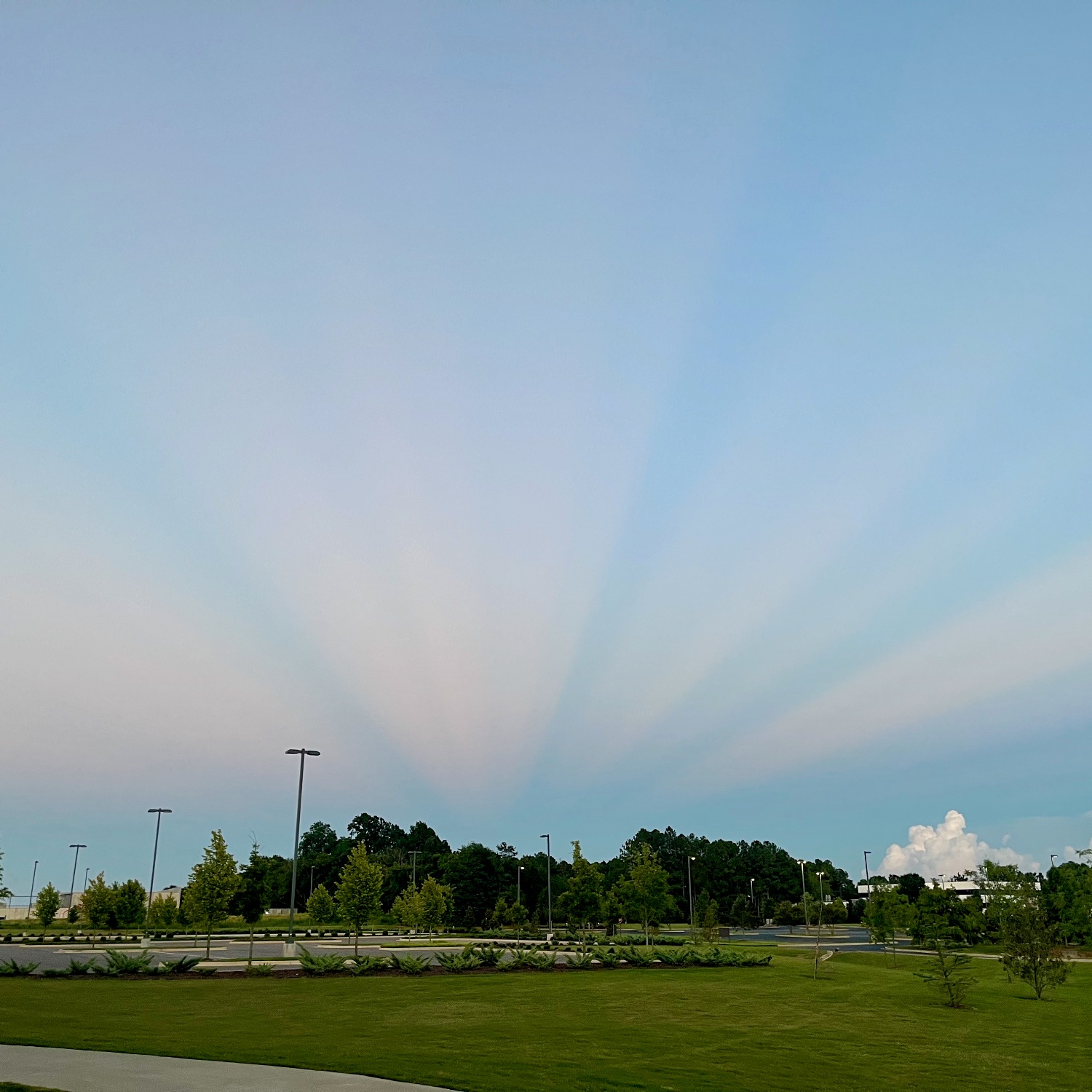When Dorothy saw faint pinkish rays in Huntsville, Alabama, US fanning out from the horizon on the opposite side of the sky to the setting Sun, she called her cloudspotting mother, Kathleen Janick (Member 49,856), to ask her ‘What in the world?’
These are anticrepuscular rays, Kathleen explained. They are like the more familiar crepuscular rays that beam out from the direction of the Sun, except for one important difference. Both result from the beams of sunlight between shadows cast by clouds being scattered by haze in the atmosphere. Anticrepuscular rays appear to fan out not from the direction of the Sun, like crepuscular rays do, but from the part of the sky directly opposite it.
Although sunlight is as good as parallel, the beams seem to fan out due to the effect of perspective. It is just like the way rail tracks appear to meet in the far distance. In the case of anticrepuscular rays, the beams of light and shadow are cast right across the entire sky from behind you. Since you have to turn your back on the setting or rising Sun, most people miss them. But not Dorothy – and not, thanks to FaceTime, her informative mum.



